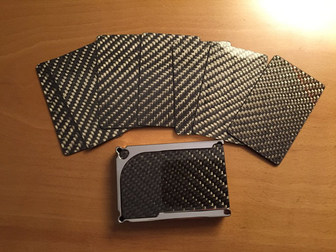2016年10月28日
Basic knowlesge about RFID you should know

How much do you know about RFID chips? Do you know how many you're carrying at any given moment? Do you know what information is stored on them? Do you know how close a hacker needs to get to you in order to steal that information? Have you considered any form of RFID protection? And most importantly, do you know what RFID protection will be effective?
These days, RFID chips are present in all sorts of items, such as credit cards, library books, grocery goods, security tags, implanted pet details, implanted medical records, passports and more. Some schools now require their students wear RFID tags. The amount of information which could be learned about you from your RFID chips is quite a lot! Plus, you never know what those information thieves are planning on doing with your information, either. So, it's best to understand the risks of RFID hacking and limit your exposure to harm. Here's the basics of what you need to know.
What Is RFID?
RFID stands for Radio Frequency IDentification and it's used for short-distance communication of information. It does not require line of sight to work, meaning that the RFID chip and the reader merely need to be within range of each other to communicate.
There are a few main types of RFID chip:
Passive Tags require a radio signal to be emitted from the receiver in order to be read. This also means they operate on a small distance and can't transmit a lot of data. Examples of these can be found in credit cards and door passes.
Active Tags have on-board batteries and can therefore actively transmit their data over a larger distance. Also, they can transmit a larger amount of data than passive tags. Examples of active tags include toll passes mounted in cars.
RFID frequencies vary according to the device and country, but usually operate in this range:
Ultra High Frequency (UFH) RFID is 868-870 MHz or 902-928 MHz
Super High Frequency (SHF) RFID is 2.400-2.483 GHz
Posted by may000 at
16:59
│Comments(0)




